
2020 was a year full of twists and turns. Undoubtedly, it turned the world of experiential marketing on its head. What will 2021 bring? Definitely adaptation in an ever-changing landscape. Brands will continue to embrace experiential marketing examples that are as authentic as they are flexible to meet consumers’ needs. With that, let’s check out seven successful trends that are inspiring the future of experiential marketing.
A 2018 survey revealed more than 50% of Gen-Zers said knowing a brand is socially conscious influences their purchasing decisions. 2019’s Pride Parade in New York commemorated the 50th anniversary of the Stonewall Riots. Zara and JustWater wanted to take part in this milestone and show their pride. Using a three-sided glass truck customized into a 3D Pride flag showcasing 9,000 bottles of JustWater, paradegoers stayed hydrated as Zara’s field marketing team provided a rainbow selection of complimentary JustWater. Zara’s cause marketing campaign netted over one million impressions on social media worldwide while highlighting the brand’s support for the LGBTQ+ community.
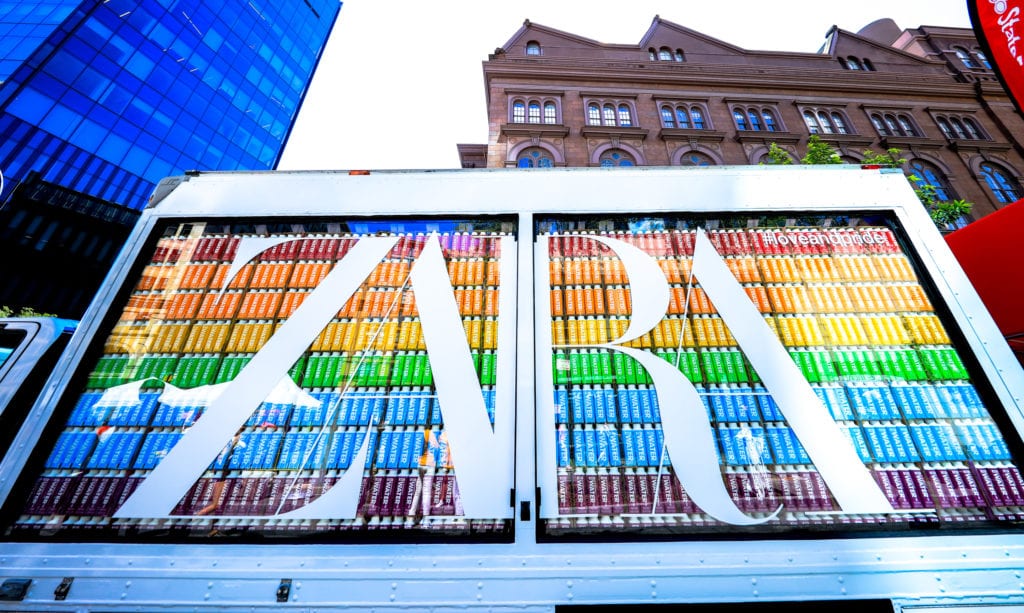
User-generated content is one of the most organic experiential marketing examples. What it lacks in finesse, it makes up for with authenticity, which is always valuable. Over the past few years, content created by consumers has become a cornerstone of many marketing strategies. In a 2020 study, 86% of brands are repurposing their social media followers’ content.
Last fall, Nathan Apodaca combined skateboarding, Ocean Spray cranberry juice, and Fleetwood Mac’s “Dreams” to create a viral moment. His TikTok took the Internet by storm, with celebrities, Ocean Spray’s CEO, and even Fleetwood Mac co-founder Mick Fleetwood uploading their renditions. Brands that take advantage of user-generated content endear themselves to consumers who appreciate messaging that’s made by people just like them.
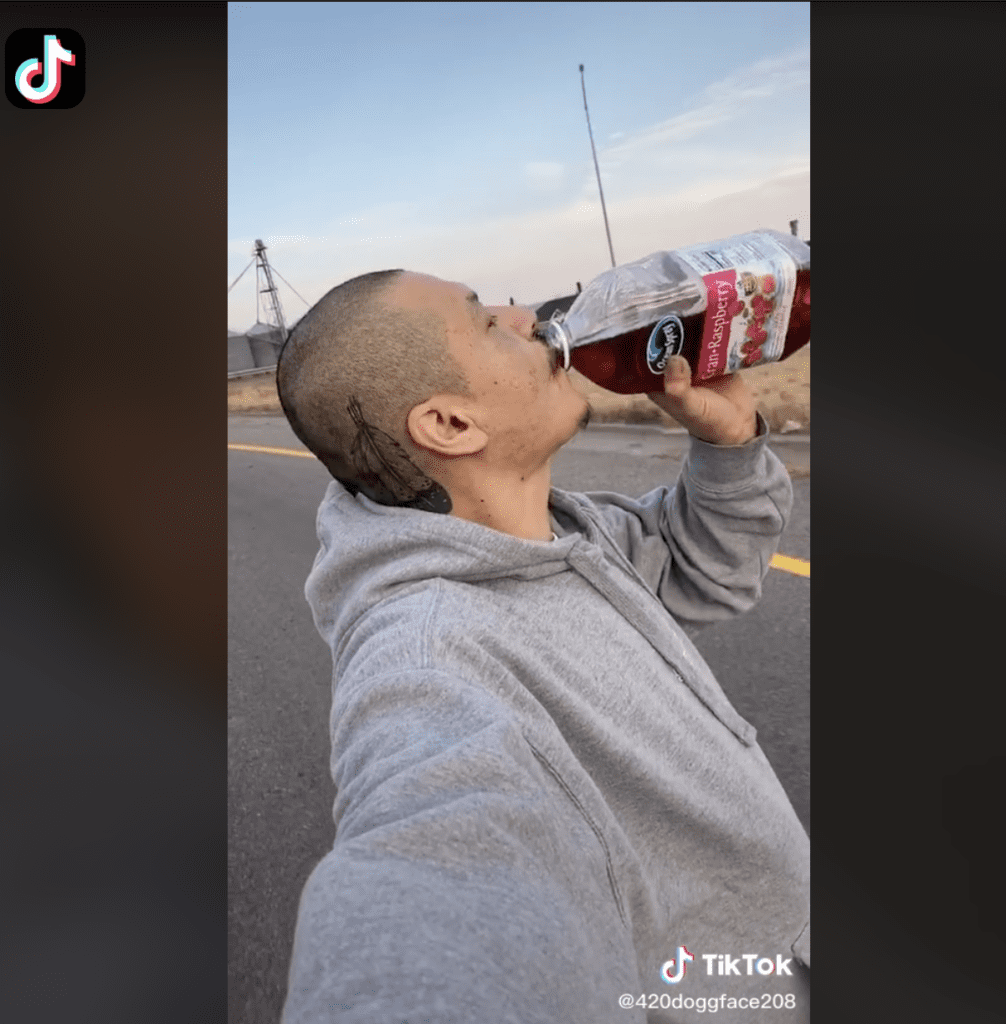
In a world where large-scale events are often activated, consumers appreciate responsible brands that actively reduce their environmental footprint. In 2018, Adidas created Run For The Oceans, uniting one million runners and raising $1 million to educate and empower 100,000 families living in coastal areas affected by plastic pollution. Adidas created five million pairs of shoes using recycled ocean plastic.
By showing commitment to creating a sustainable future, Adidas developed a platform that brings consumers and its global brand together. In 2021, brands are executing experiences that focus on strategies that amplify messaging and tangible commitments to saving the environment.

COVID-19 has forced brands to rethink how they launch multi-sensory engagement without the impact of in-person experiences. Over the past year, industries have activated experiential marketing examples that bring those moments to consumers’ homes.
Last holiday season, IKEA offered customers a free “Gingerbread Höme” kit allowing them to furnish gingerbread houses with edible versions of the brand’s famous furniture. To boost impressions, IKEA encouraged customers to share their creations on social media using the hashtag #IKEAHoliday.

Brands turn to immersive promotions to educate consumers by letting them take their products for a test-drive. As contactless technology becomes the preferred transaction method by increasing safety, cleanliness, and service, Mastercard launched its Tap & Go service. Wanting to teach customers the ease and simplicity of using Tap and Go, Mastercard had New Yorkers use its contactless technology to make their commutes more efficient.
Using a branded food truck with complimentary cuisine provided by famed-New York chef JJ Johnson, Mastercard set-up interactive stations at three busy subway stations in Manhattan. Commuters were invited to test the speed of Tap & Go for themselves and received free Metrocards for participating.
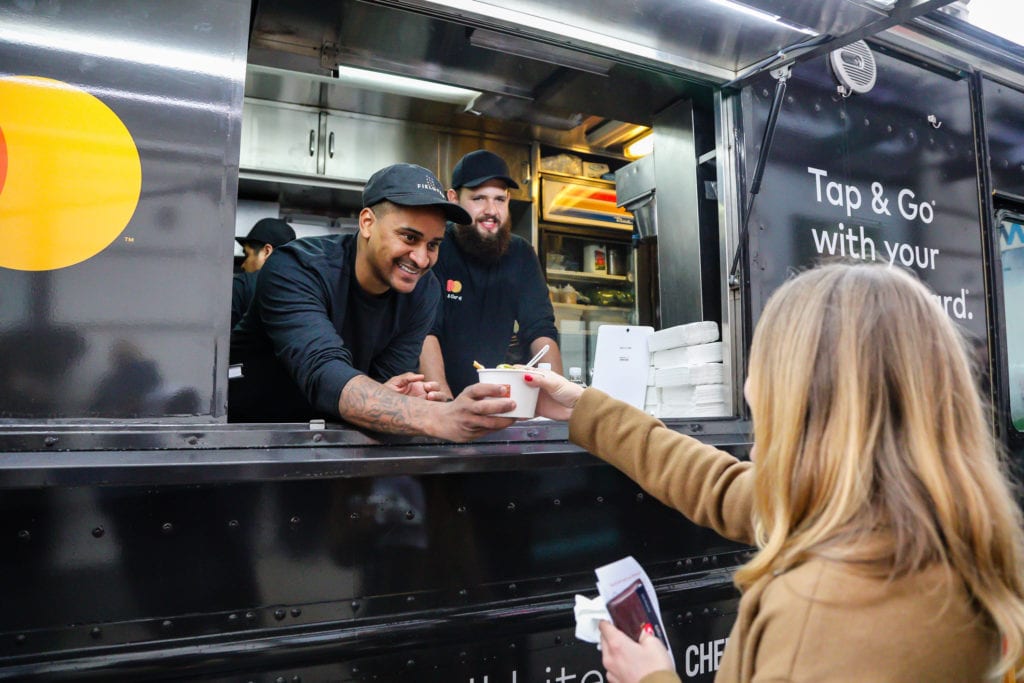
Some of the most successful experiential marketing examples allow consumers to imagine how products can improve their lives. Experiential marketing that hits close to home already has one foot in the door with winning over consumers.
Located at Paris’ Boulevard Diderot, designer Marc Aurel created “the bus stop of the future,” a multi-purpose public space designed to blend into the surrounding urban environment. Aside from purchasing a bus ticket, passengers can have a coffee, borrow a book, recharge their phones, and more. By reimagining the ordinary, Paris made the conventionality of waiting for the bus an experience that fosters social interaction and engagement.
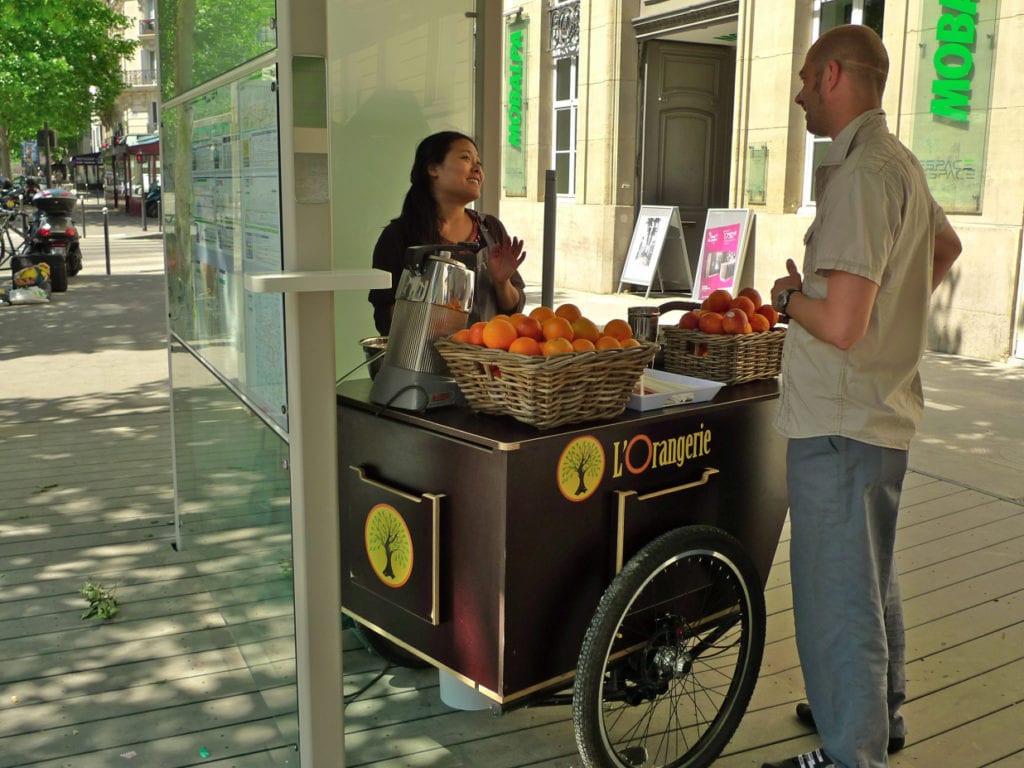
In 2016, to boost tourism, VisitMT.com brought “Big Sky Country” to the streets of Chicago, Minneapolis, and Seattle. Montana might not be on everyone’s wish list, but the “Treasure State” wanted to show what it has to offer.
VisitMT’s experience featured knowledgeable brand ambassadors and a food truck converted into the state-landmark Polebridge Mercantile. Receiving complimentary “made-in-Montana” huckleberry ice cream and bison jerky, visitors got a taste of the real Montana experience.
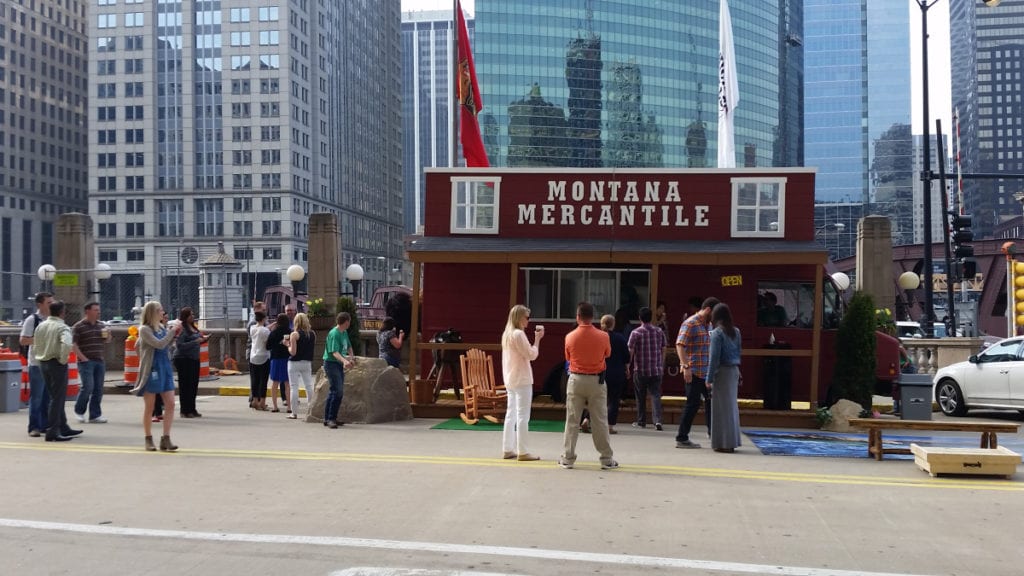
Every marketing campaign is different, but the ultimate goal is always the same: to reach new consumers and keep old ones in the fold. These successful experiential marketing examples will help enhance your brand strategy and foster lasting connections with customers. Because when a brand can stir genuine, positive emotions with consumers, they have the power to change the conversation.
Food Truck Promotions has all of the resources you’ll need to execute your own experiential marketing campaign. Learn more about us and contact us today to get started!
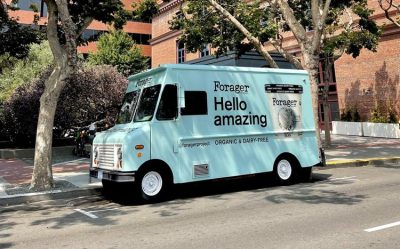
“The purpose of life is to live it, to taste experience to the utmost, to reach out eagerly and without fear for newer and richer
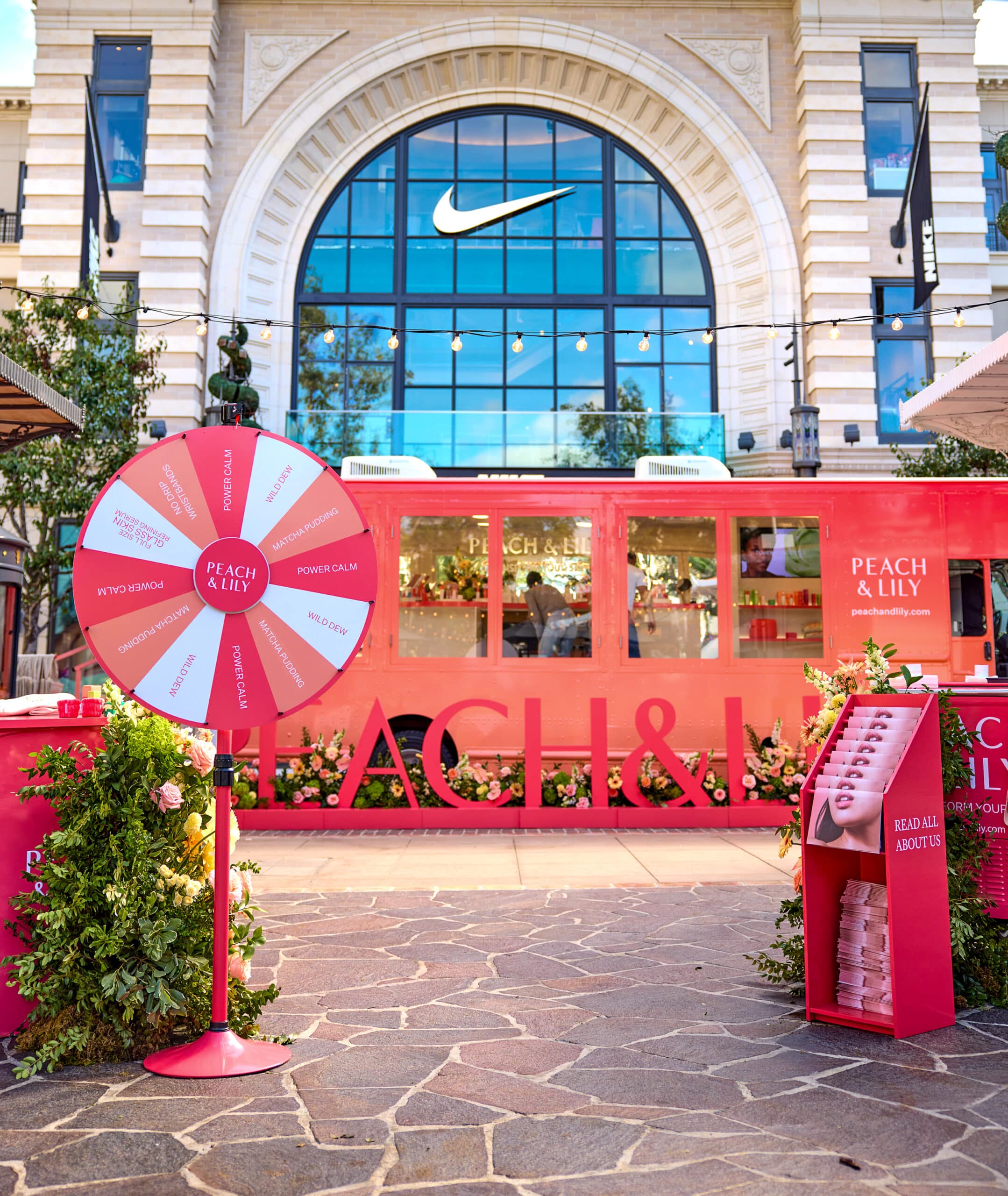
It’s been a big year here at Food Truck Promotions. With the holidays on the horizon and the new year quickly approaching, we’ve been looking
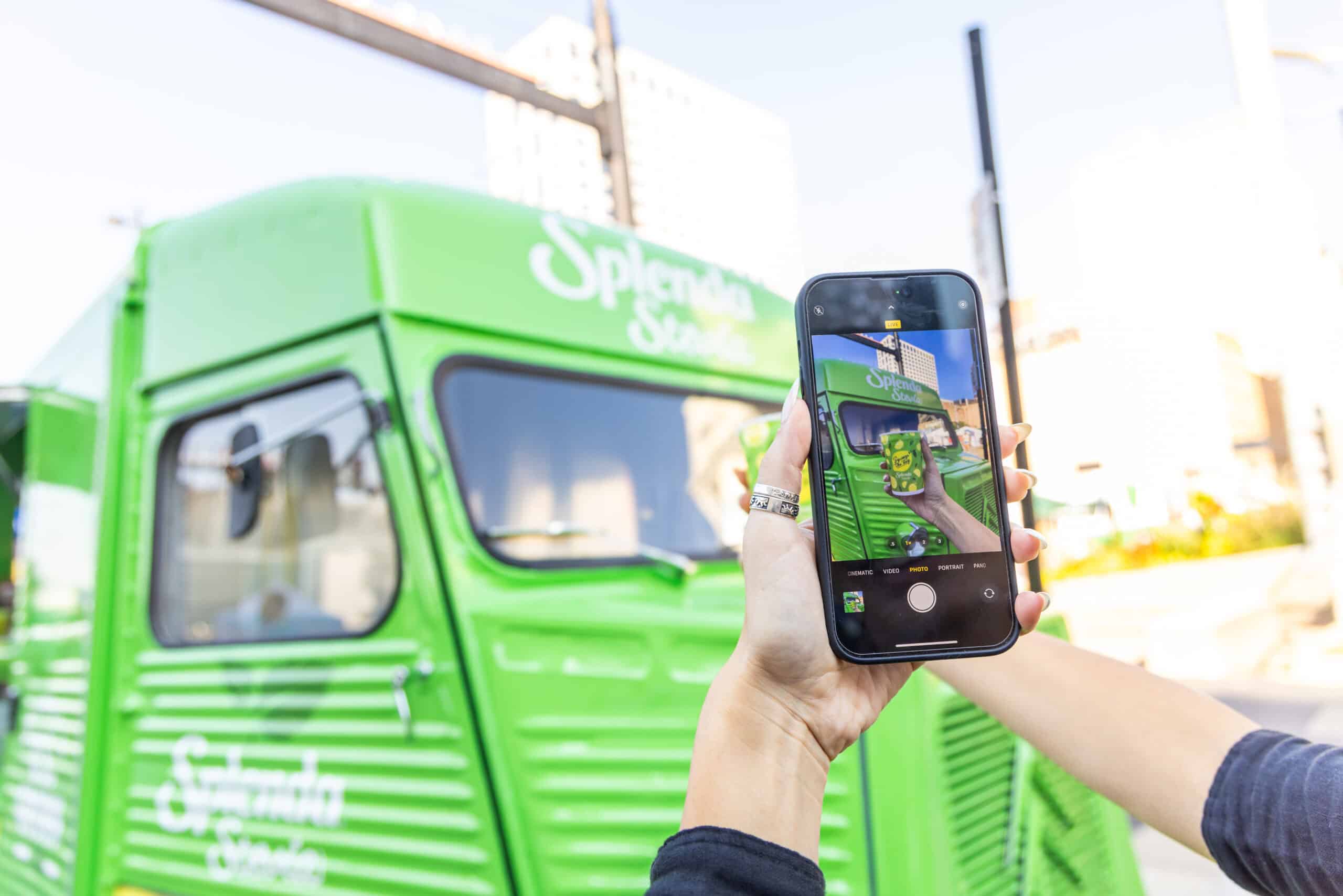
Why UGC is a Key to Successful Modern Marketing If you are interested in modern marketing, you already know that the advertising world has dramatically
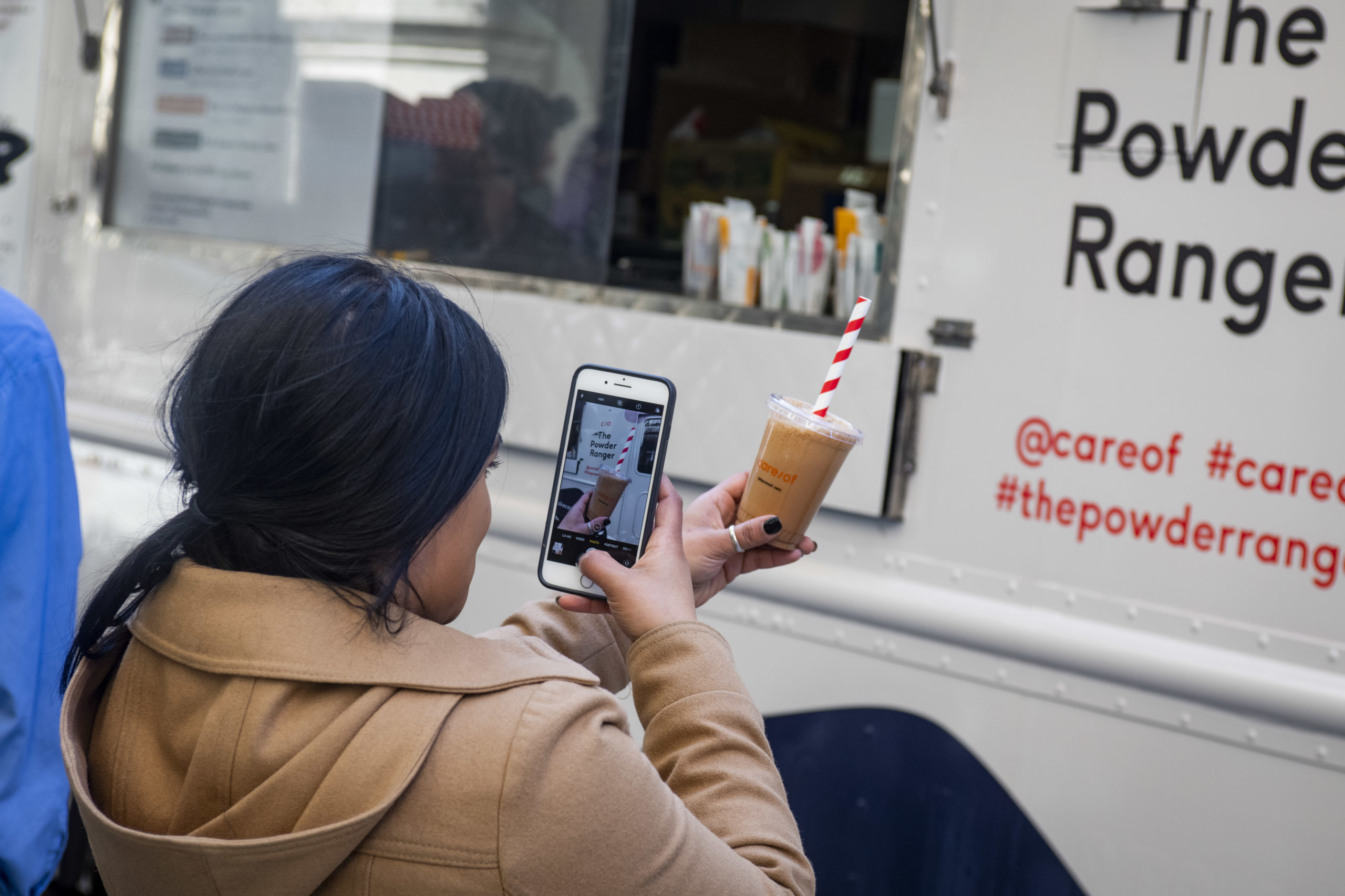
When businesses think of experiential marketing, it’s easy to get caught up in the spectacle of activations that are lavish and grand; the largest companies in the world budget millions of dollars each year to captivate consumers with show-stopping and headlines-grabbing events.
But those aren’t the only types of experiences available. Successful experiential marketing doesn’t have to be intimidating because it’s about immersing consumers in the world of your brand to build better awareness and better relationships. And there are many ways small businesses can create that level of engagement because experiential marketing is less about the money spent and more about the experience itself.
Check out the benefits experiential marketing brings for small businesses and some ideas that’ll help introduce you to one of the most effective marketing platforms at your disposal.
Experiential marketing creates meaningful connections between a brand and its customers. Unlike traditional forms of marketing, experiential marketing turns a passive audience into active participants who engage directly with a brand, its identity, and its values.
Experiential marketing’s immersive and multi-sensory experiences cement a long-lasting impression in consumers’ minds. And the numbers don’t lie. According to Event Marketer, 74% of consumers say they’re more likely to purchase a product or service because of branding marketing experiences.
For small businesses, experiential marketing is a powerful tool that’s simple to activate and can quickly increase customer loyalty and direct sales. But, a winning experiential marketing campaign isn’t a one-off introduction. It’s a loyalty network that activates new customers and keeps old ones from going somewhere else.
Awareness is a key component of a business’ longevity. The more people who know your brand exists, the more potential customers you can target. Experiential marketing provides a solution to increasing word-of-mouth exposure. In fact, between 50% and 80% of all word-of-mouth promotion comes from experiential marketing.
Like no other marketing channel, experiential marketing pulls potential consumers through the entire sales funnel with one touch. Driving deep consumer-to-brand connections turns new customers into fans and eventually into advocates for your small business. There are many other benefits experiential marketing brings from small businesses:
Something important to note, and something many businesses get wrong, is that experiential marketing isn’t a publicity stunt. While experiential marketing does incorporate surprise and showmanship, experiential marketing is a long-term strategy and not a one-time event. But don’t feel overwhelmed. Your small business doesn’t need a million-dollar budget to execute a successful experiential marketing campaign. Here are a few ideas to help get you started:
The most successful experiential marketing campaigns always involve these three elements:
With a host of tools available to reach consumers, both in-person and online, edging out the competition has become a matter of survival. To grow and prosper, small businesses must build strong relationships with customers and engage in meaningful and memorable ways.
The most effective way to make those goals a reality is to take advantage of experiential marketing. When your small business delivers extraordinary experiences, you can capture hearts and minds. And that’s how any business, no matter its size, not only survives but thrives.

“The purpose of life is to live it, to taste experience to the utmost, to reach out eagerly and without fear for newer and richer

It’s been a big year here at Food Truck Promotions. With the holidays on the horizon and the new year quickly approaching, we’ve been looking

Why UGC is a Key to Successful Modern Marketing If you are interested in modern marketing, you already know that the advertising world has dramatically
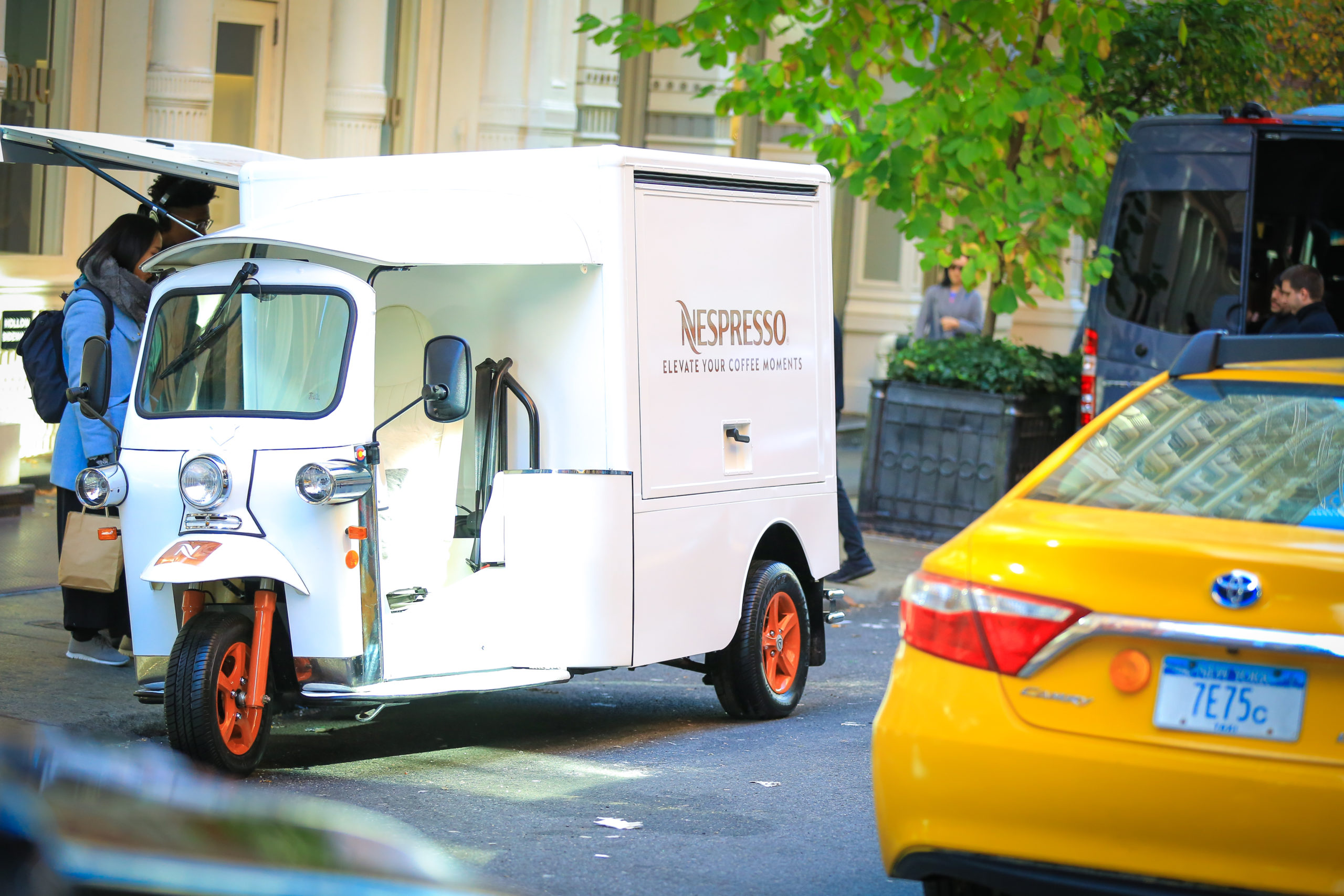
Are you tired of seeing your brand held back from reaching new heights? Do you dream of bigger things, like expanding your reach to new audiences far and wide? Mobile marketing tours are your answer to exciting consumers, anywhere and anytime. Making an experiential marketing investment across multiple locations allows your brand to increase awareness, boost engagement, and generate higher sales.
Strengthening brand/consumer relationships is fundamental to experiential marketing because people remember emotional experiences the best. It’s a simple rule of human nature. With an indelible campaign that brings your brand to the streets, your brand has the power to make personal connections with a wider audience, targeting new locations and new demographics that were once unavailable to you.
Let’s hit the road with a closer look at mobile marketing tours and how they can put your brand in the driver’s seat of maximizing success.

Mobile marketing tours are an influential medium inside the experiential marketing universe that lets brands interact with consumers across multiple locations within a fixed time period.
Using branded vehicles, help from ambassadors who can speak to your brand, and interactive activities to foster engagement and participation, mobile marketing tours are designed to target locations where foot-traffic is high to maximize overall impact.
It’s all about “location, location, location” because where your mobile marketing tour goes decides how wide of a net you can ultimately cast. Great for warmer weather months, when people are more likely to be out-and-about, the best mobile marketing tours activate in busy locations like public squares, parks, beaches, shopping centers, arenas, and more.
When your mobile marketing tour aligns with people’s vacation plans, you can turn your campaign into an event people plan their schedules around. Timing your tour with popular music festivals and sporting events is a great way to instantly become the highlight of consumers’ year.
The best kind of mobile marketing tour is one that captures the hearts and minds of new audiences previously unavailable to your brand. But, no two destinations are the same and your activation must match the demographics and individuality of each location. Check out these mobile marketing tour ideas for some of the U.S.’ most popular cities:
One especially popular way of using a mobile tour is to sample your food or drink products. Mobile tours accomplish what other more traditional marketing methods (like commercials and ads) can’t: getting your consumers to fall in love with your product in real-time. Sampling your food and beverage items takes confidence, and it makes consumers extremely more likely to trust your brand.
Take a closer look at how other brands have used creative mobile food sampling tours to drive business goals and win over their target audience.
Nespresso is a stand out example of a sampling tour. In 2019, the brand wanted to reintroduce consumers to its boutique locations by bringing the experience directly to them: with a branded, vintage E-tuk vehicle customized into a dual mobile showroom showcasing their line of coffee and espresso machines, and pop-up coffee shop launching their “Nordic Limited Edition Coffee,” Nespresso went on a six-week, mobile marketing tour stopping in New York City, Miami, Los Angeles, and San Francisco.
In the U.S.’s most bustling cities, thousands of consumers were treated to complimentary cups of Nespresso made by professional baristas and offered exclusive giveaways and prizes. Nespresso’s multi-sensory experiences helped boost sales of its coffee and machines while also cementing the brand’s unique in-person experience that consumers can’t find anywhere else.
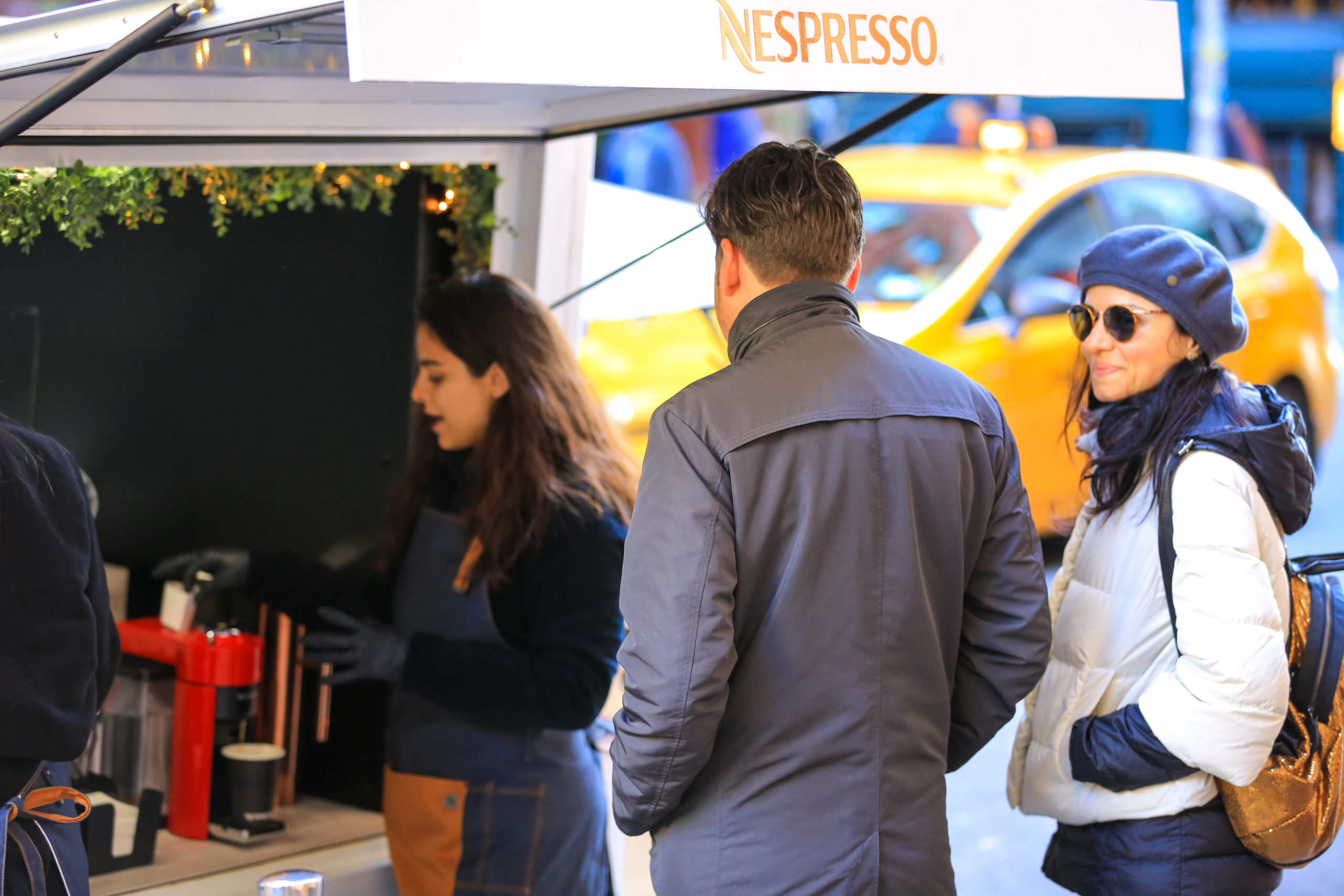
Alpha Foods customized a food truck and headed on a food sampling mobile tour to different college campuses across Los Angeles and New York, including NYU, Cornell, Columbia, FIT, Fordham, USC, and UCLA. Students had the option of choosing between breakfast sandwiches, spicy maple BBQ chick’n nuggets, chick’n fajita burritos, or steak ranchero burritos.
As they waited for their food, consumers also had the opportunity to sign up and enter for a chance to win a fully stocked Alpha Foods freezer. All they had to do was scan the QR code, sign up, and hope for the best! What’s more? They had the chance to snap a pic with the Alpha Foods branded photo frame and post it online using the #AlphaOnTour hashtag. This extra interactive element made all the difference, helping drive brand awareness of Alpha Foods in the digital landscape and taking the product sampling activation to another level.
With our help, Forager Project’s vegan ice cream line made its way to nine different locations across San Francisco in a fully-stocked branded food truck that gave people the opportunity to sample Cookies & Cream, Chocolate, and Vanilla. For a simple and effective consumer experience, guests had the choice of signing up for the Forager newsletter or following Forager on Instagram to get their choice of an ice cream sample and a coupon code to buy the delicious, dairy-free product in-store. In total, the brand was able gave out as many as 500 samples a day, which meant that the brand directly reached an astounding 4,500 people, not even to mention the growth that the activation sparked on social media.
Westgold drove a branded food truck around southern California and created a 12-day, one-of-a-kind mobile butter bar to launch their butter in the USA. In addition to sampling Westgold butter, guests were welcomed to an interactive photo-booth moment, given bounce back cards and tote bags, and invited to enter an exciting raffle with the chance to win a kitchen supply set accompanied by a whole month’s worth of butter. With all of these elements sewn together, there’s no doubt that southern California was left knowing just how delicious Westgold Butter really is.
From tour ideas and location scouting to securing permits, handling logistics, and training staff, working with professionals who’ve executed complex mobile marketing tours can help ensure your own campaign’s success. Now that you know more about mobile marketing tours and how they can help your brand find new customers or connect closer with existing ones, now is a great time to start planning your own adventure.

“The purpose of life is to live it, to taste experience to the utmost, to reach out eagerly and without fear for newer and richer

It’s been a big year here at Food Truck Promotions. With the holidays on the horizon and the new year quickly approaching, we’ve been looking

Why UGC is a Key to Successful Modern Marketing If you are interested in modern marketing, you already know that the advertising world has dramatically
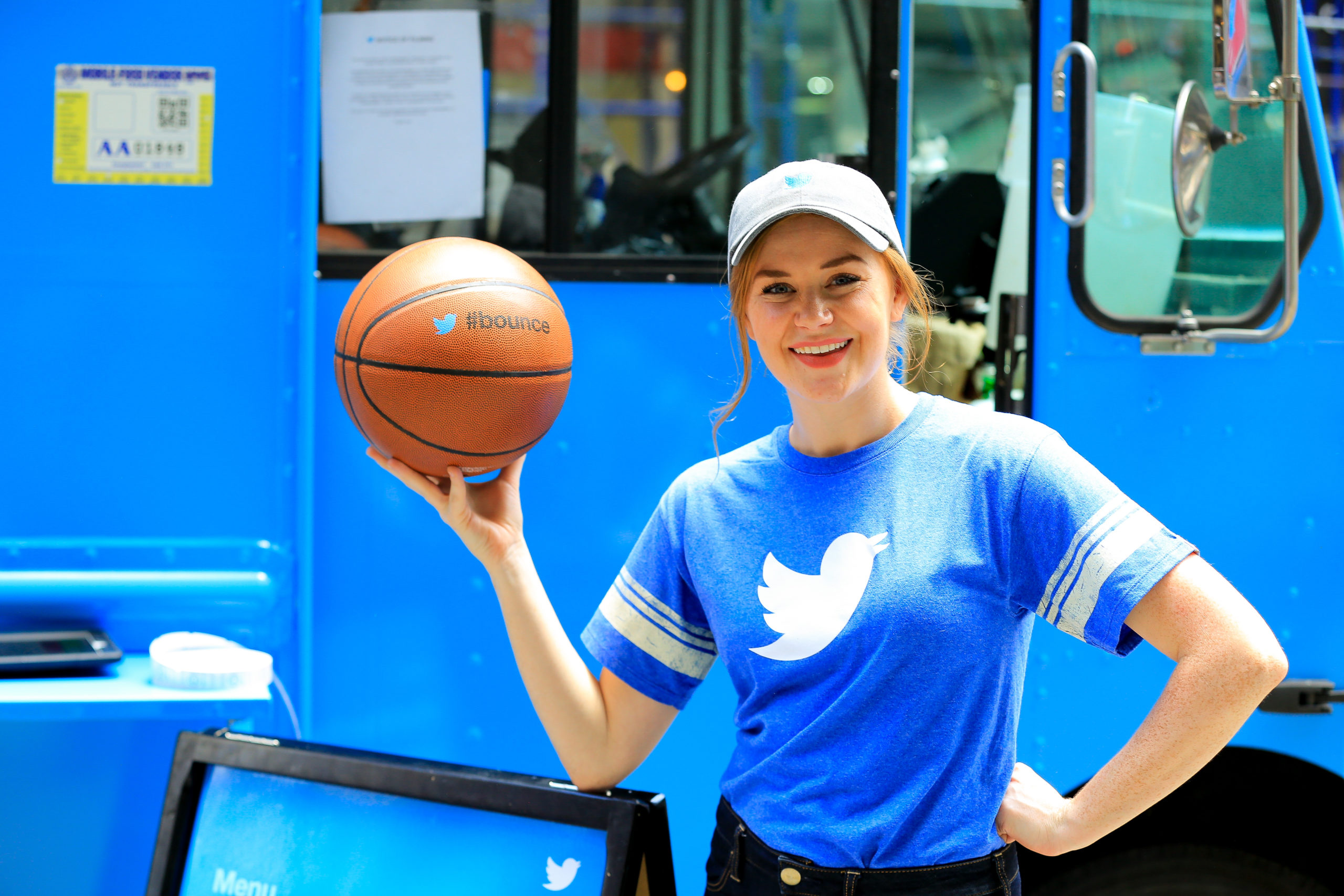
Street team marketing is all about getting boots on the ground, engaging with consumers, and putting a human and friendly face to your brand.
By reaching your audience where they are, you can create memorable moments, receive real-time customer feedback, and inspire people to invest in you.
It’s easy to plan a street team marketing campaign. It just takes the right amount of strategy and skill to pull off these one-of-a-kind events.
Let’s dive into what street team marketing is, why it’s so effective, and the most important tips you need to know.

Street team marketing is a form of experiential marketing that deploys brand ambassadors to engage consumers with in-person experiences. In fact, street team marketing is one of the oldest forms of live, experiential marketing.
By targeting busy, high-foot traffic locations, street team marketing gives brands the chance to directly influence people by informing and educating them, distributing samples, conducting live demos, and more.
Street team marketing impacts awareness, consumer engagement, and sales. When your brand is able to launch a memorable experience in-person, your creative options are endless. All you need is your imagination and a solid plan to fully harness the power that a street team marketing event can deliver.
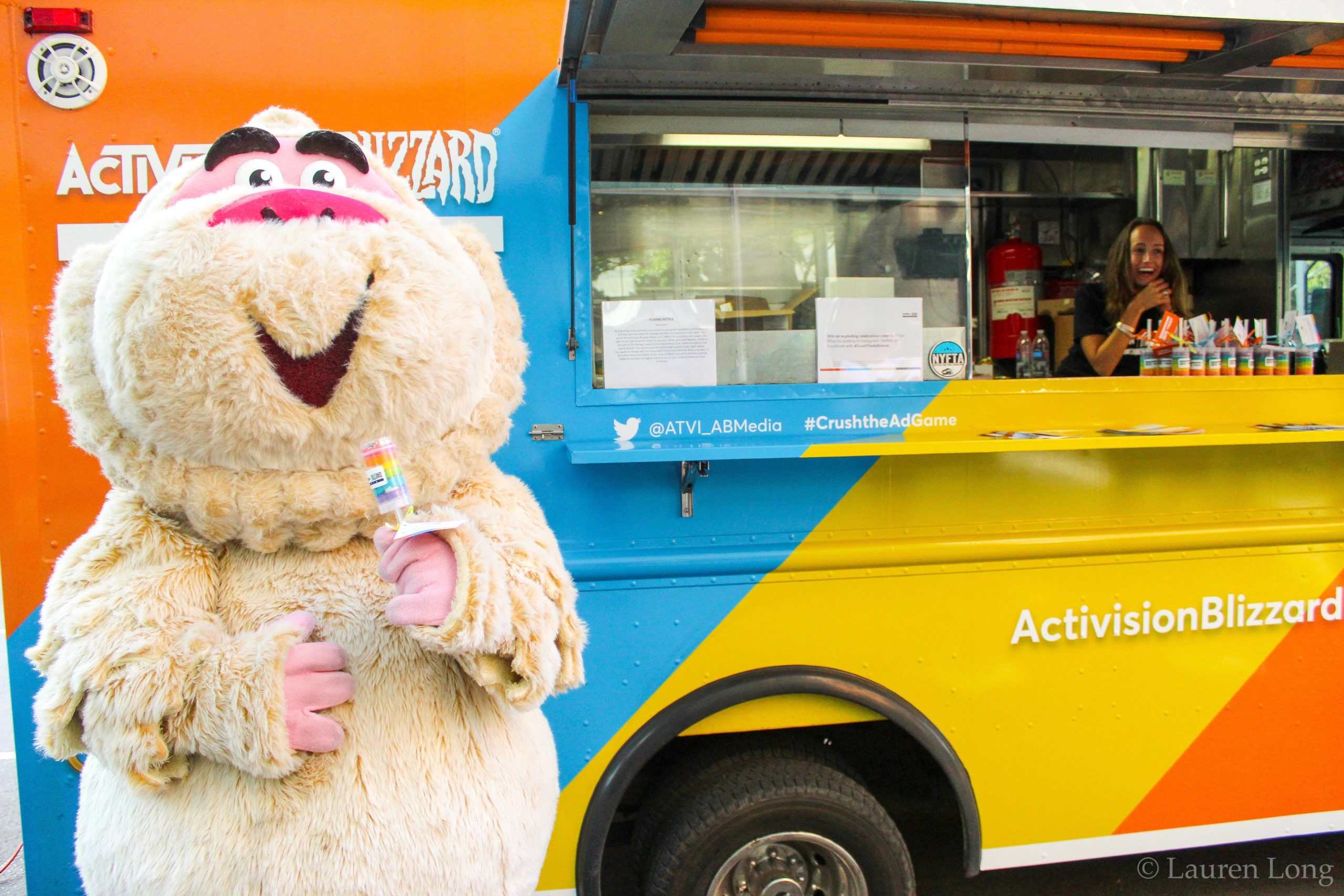
Street team marketing gives your brand a personal touch and inspires face-to-face interaction. Even as digital forms of experiential marketing rise in popularity, consumers still crave human connections.
Plus, street team marketing is relatively cost-effective compared to other types of experiential marketing, while yielding similar results.
At World Pride NYC in June 2019, Zara and JustWater partnered to commemorate the 50th anniversary of the Stonewall Riots. With a three-sided glass mobile showroom displaying a 3D Pride flag created from nearly 10,000 bottles of JustWater, Zara’s friendly street marketing team livened spirits and kept parade-goers hydrated with a rainbow selection of complimentary drinks.
That same year, Twitter celebrated the U.S. Women’s National soccer team’s historic fourth World Cup championship with a three-day branded promotion tour around New York City. Transforming a food truck into an immersive, branded vehicle and creating a soccer-themed, interactive experience, Twitter’s #StartWithThem campaign was led by a street marketing team who greeting passers-by with French-themed culinary delights and a chance to win prizes from lounge chairs to Apple TVs and Airpods.
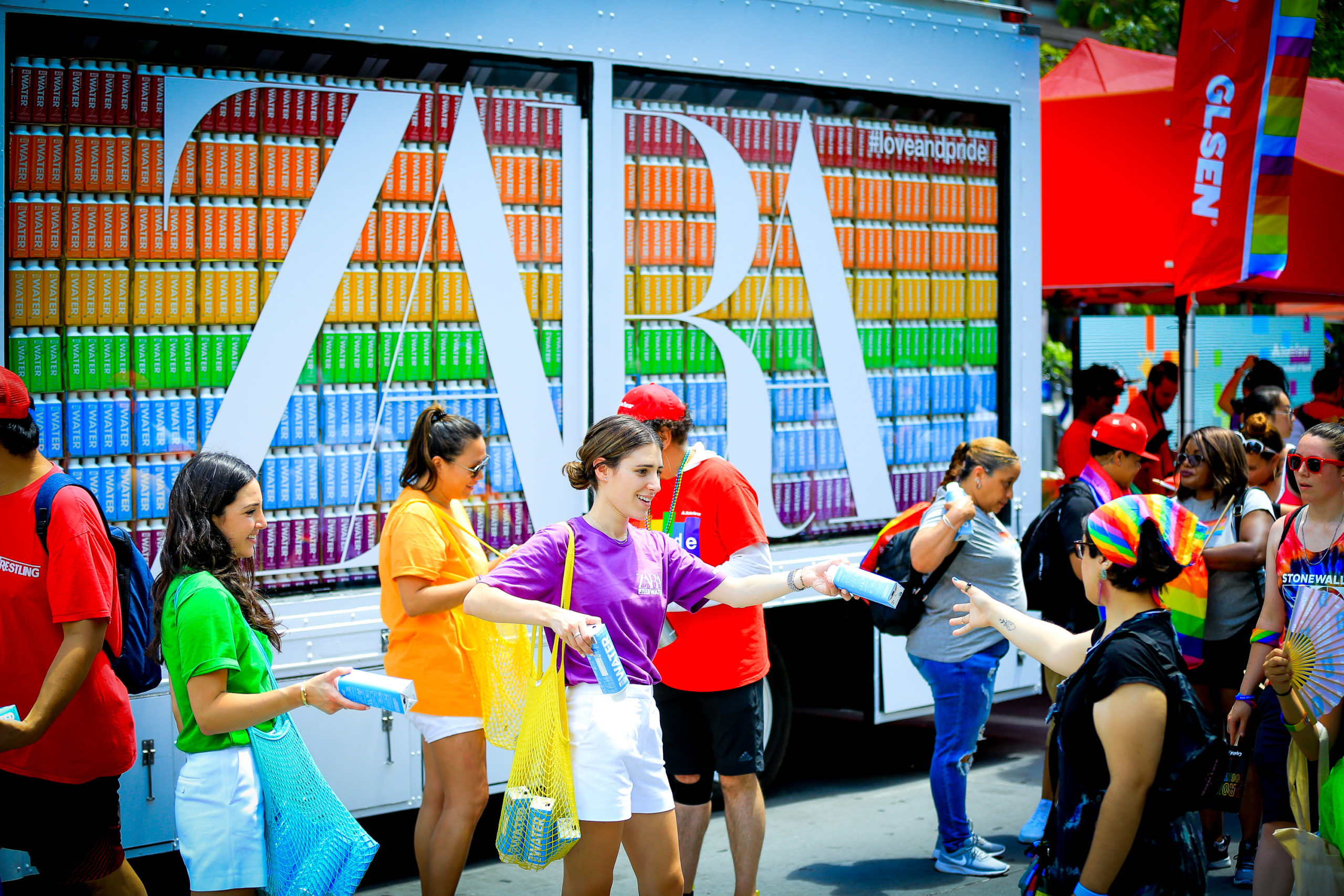
Street team marketing comes in many forms and is completely customizable to your specific goals:
There’s a lot to consider when planning a street team marketing event, especially since you’re utilizing a staff meant to enhance and advance your ultimate goal of reaching more people, and raising awareness and sales:
If you think about it, all live marketing campaigns require staff to play a critical role in helping you reach your goals. On the front lines, these brand ambassadors are the ones who will make that always-important first impression on consumers.
In order to ensure you have the best people representing your brand that can handle the nitty-gritty, it’s important to work with an experienced team that has proven success under its belt, allowing you stay focused on the big picture of executing a remarkable campaign that lets you reach your goals.

“The purpose of life is to live it, to taste experience to the utmost, to reach out eagerly and without fear for newer and richer

It’s been a big year here at Food Truck Promotions. With the holidays on the horizon and the new year quickly approaching, we’ve been looking

Why UGC is a Key to Successful Modern Marketing If you are interested in modern marketing, you already know that the advertising world has dramatically
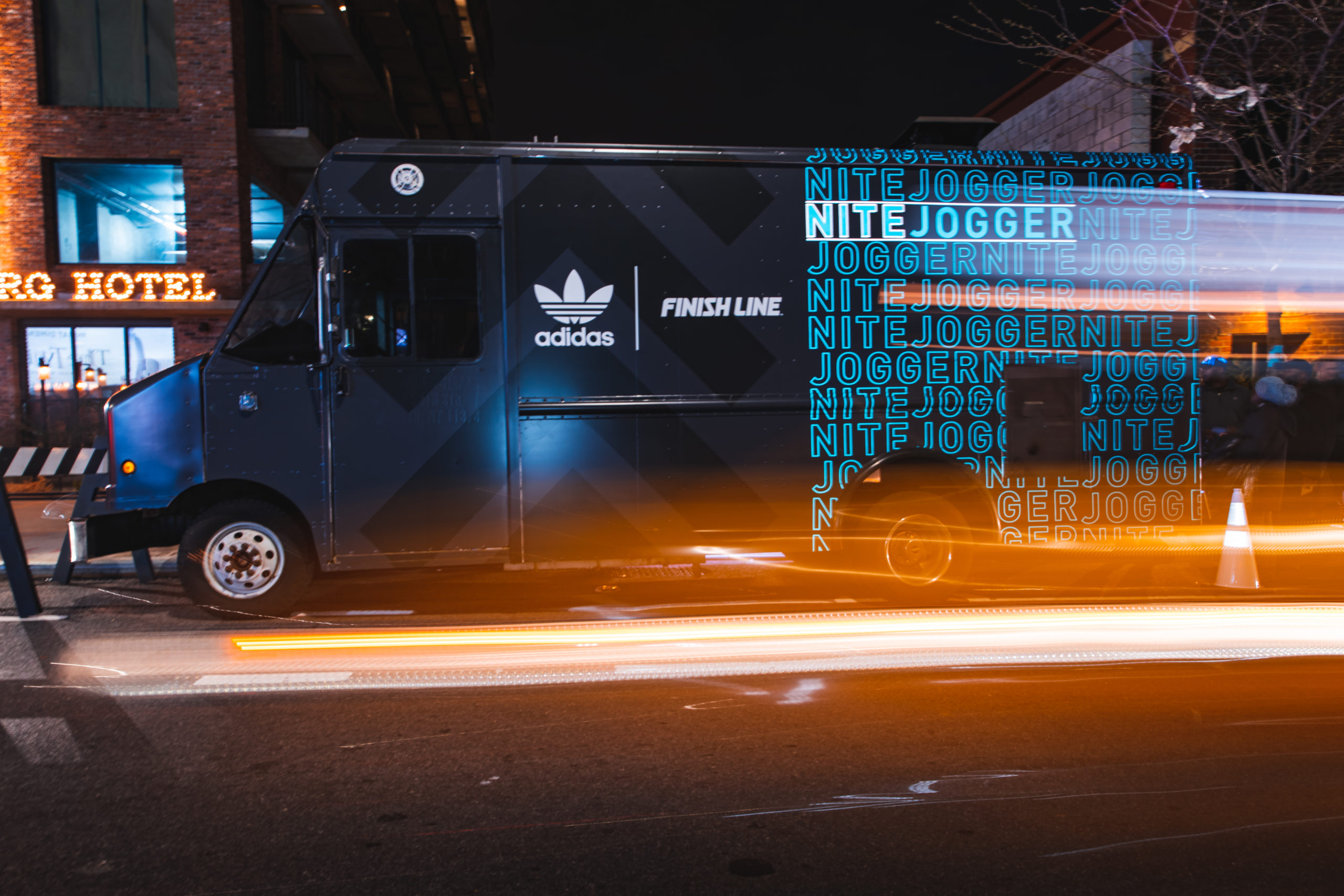
Food is a powerful tool that captures the hearts and minds of consumers. Coca-Cola is credited with being the first brand that launched experiential marketing way back in 1886, turning the scrappy upstart into the global brand synonymous with the word “beverage” it is today.
With branded food trucks consumers take notice, giving you the upper hand in a competitive marketplace by adding flavor to your experiential marketing campaign.
Let’s look at the five reasons why branded food trucks can help you stand out, so you can connect with your audience and leave a lasting (and tasty) impression.

Branded food trucks aren’t ordinary billboards. They’re a megaphone for your brand, broadcasting your message loud and clear, anytime and anywhere.
Unlike static or shared spaces, branded food trucks spread awareness and cut through the noise of your industry’s competitive marketplace, whether along one city block or across a multi-stop, nationwide tour.
Plus, with the help of highly trained brand ambassadors who’ll share their passion for your business with consumers your message is amplified even further.
Compared to other forms of experiential marketing and advertising, branded food trucks are affordable and a cost-friendly way to get noticed. Depending on the scope of your activation, the starting cost to launch a branded promotion is $15,000.
Aside from having a completely customizable, mobile marketing platform that broadcasts your brand to thousands of consumers, when you work with experienced professionals you also get peace of mind navigating the complexities of permitting and logistics, ensuring your truck is in the right place to reach your target audience.
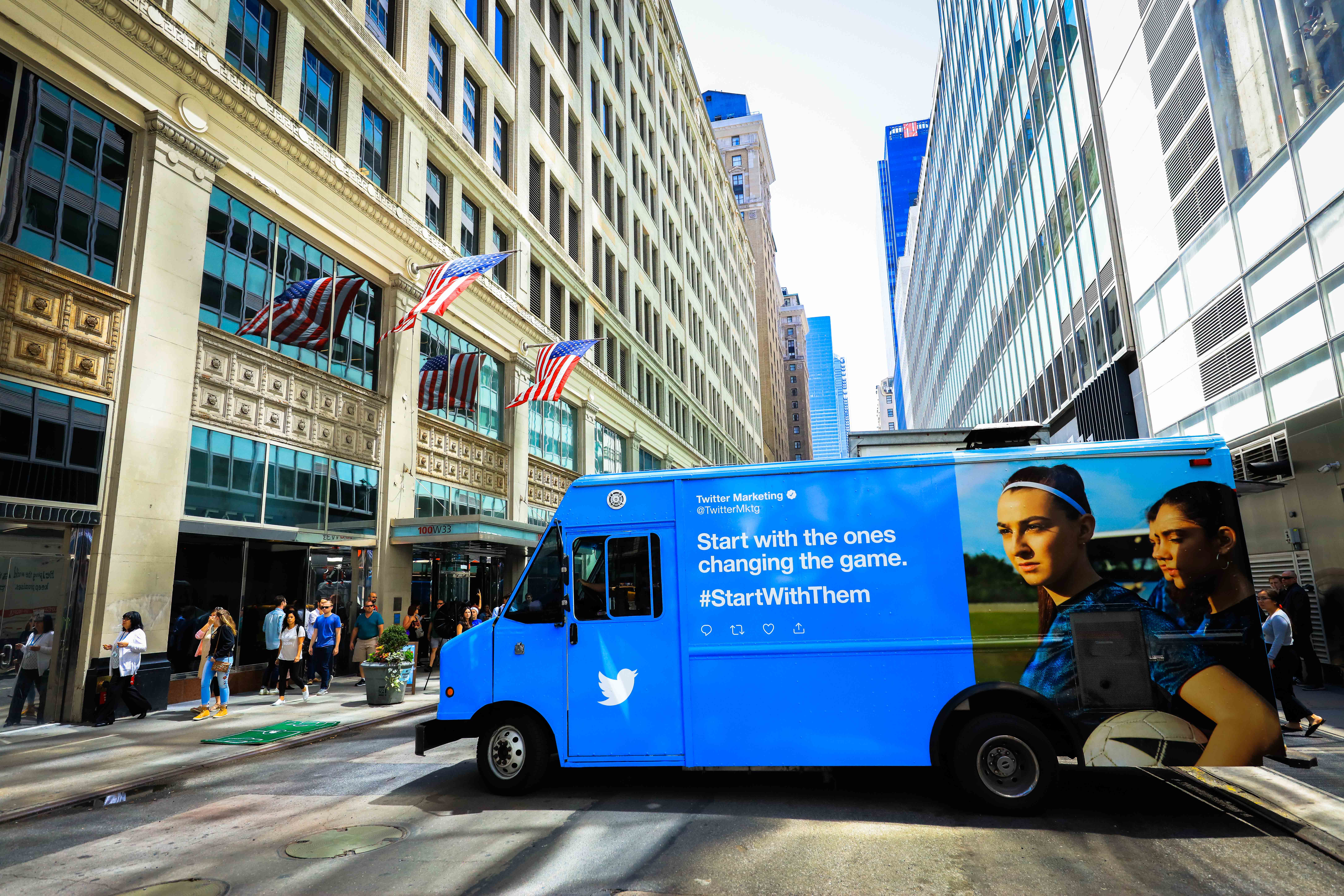
From Fortune 500 companies to small businesses alike, branded food trucks are a one-stop shopping marketing method that reaches consumers, expands target audiences, and interacts through a personal approach.
What also makes them so unique is their versatility. Having access to sites generally inaccessible when hosting a traditional marketing event, branded food trucks can be stationed in multiple locations where foot traffic is high and/or pull-up in populated city centers.
Simply put, branded food trucks have the unique capability to access consumers where they work, live, and play, broadening your brand’s horizons while also increasing visibility and awareness.
Think of your branded food truck as a blank canvas, just waiting for your personal touch to make it your own. Your activation or campaign has the potential to perfectly align with who you are. All it takes is a little customization with options like:
With the average food truck ranging between 18 – 24 ft. long and 8 ft. wide, once you’ve selected the right truck for your needs you can be as creative as you want with a team of designers and technicians working to bring your imagination to life.
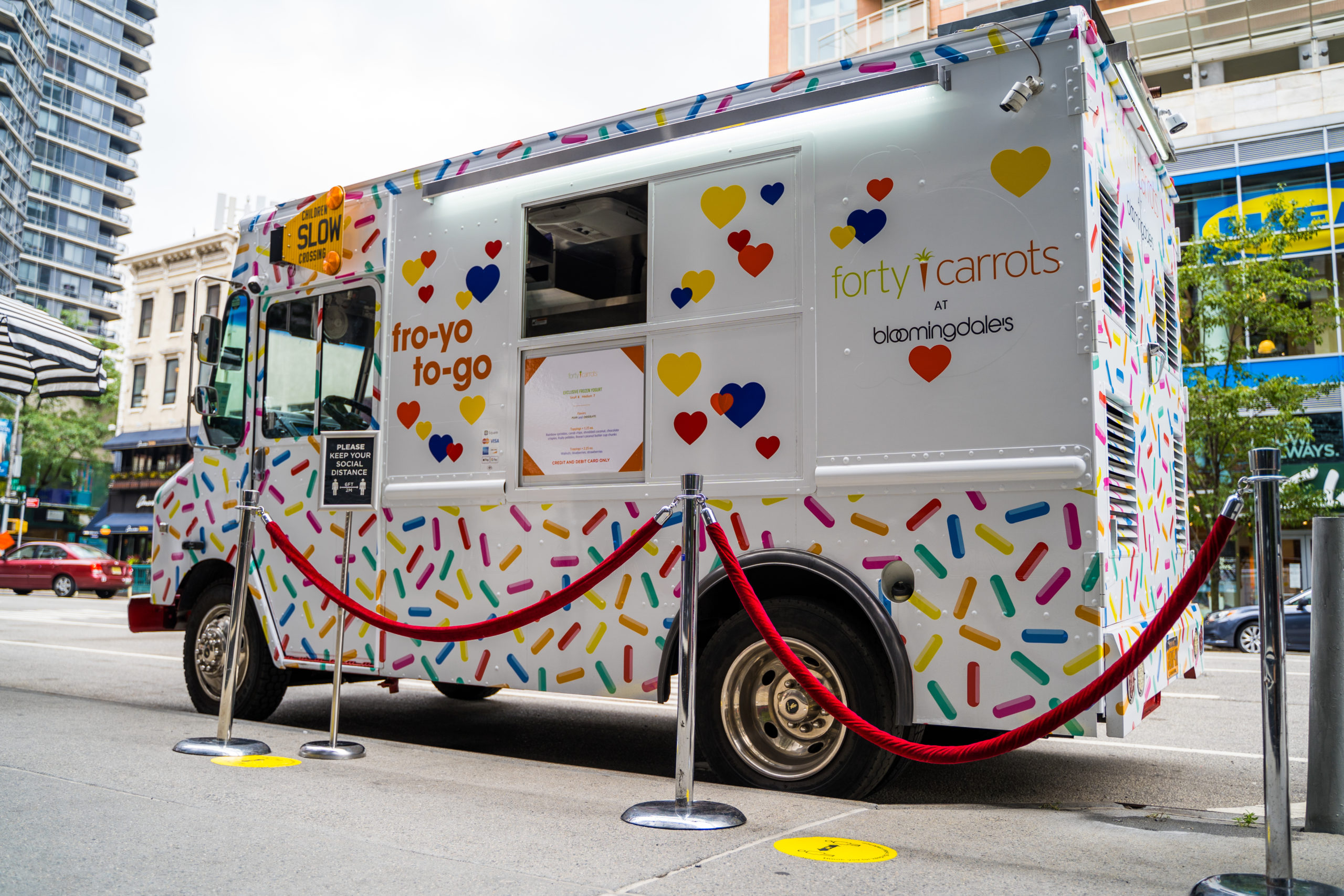
It’s no secret. We love food. Whether we’re eating it, taking pictures of it and posting them on social media, even experiencing it; we’re living in a culture where food reigns supreme.
Branded food trucks are a channel for experiential marketing campaigns where all five senses are engaged, creating multi-sensory engagement for consumers. From pop-ups to sampling tours, branded food trucks can go where you want, turn heads, and satisfy customers’ appetites for experiences that are both memorable and unique.
As hyper-competitive as today’s experiential marketing landscape is today, brands need to shine now more than ever if they want to capture a slice of the consumer marketplace.
Fads come and go, but branded food trucks give your business an edge like none other. Mobile, cost-friendly, versatile, customizable, and engaging, they incorporate all of the senses and captivate audiences with experiences that generate personal and meaningful connections.

“The purpose of life is to live it, to taste experience to the utmost, to reach out eagerly and without fear for newer and richer

It’s been a big year here at Food Truck Promotions. With the holidays on the horizon and the new year quickly approaching, we’ve been looking

Why UGC is a Key to Successful Modern Marketing If you are interested in modern marketing, you already know that the advertising world has dramatically